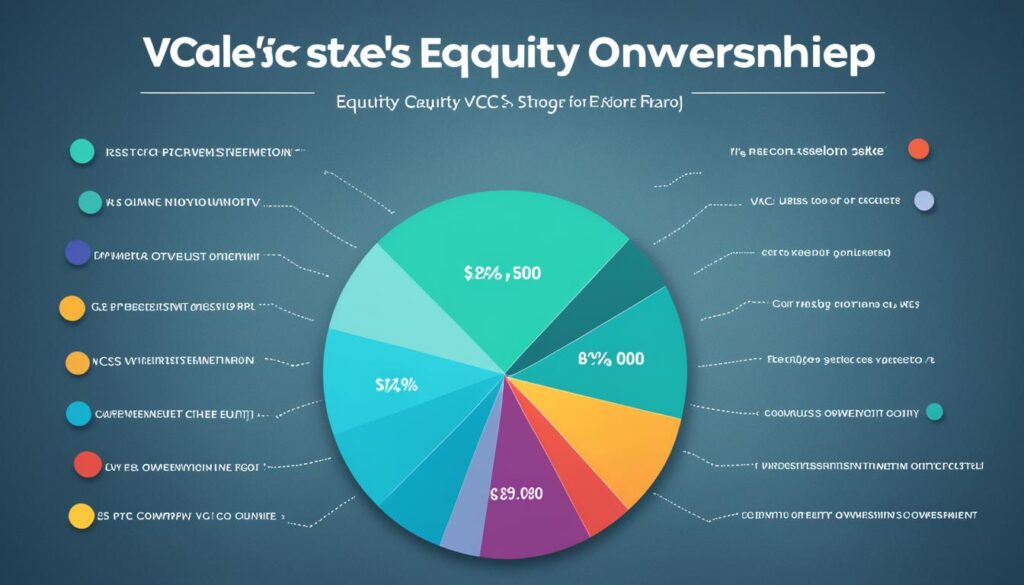When venture capitalists (VCs) invest in promising startups, they don’t simply hand over a check and walk away. So, what exactly do they expect to receive in exchange for their capital and expertise? The answer lies at the heart of the VC-startup relationship. VCs are primarily driven by the potential for significant financial returns if the companies they invest in achieve success.
By providing capital to these high-growth startups, VCs typically acquire an equity stake in the business. This stake gives them a share of ownership and, often, control rights and board representation to help guide the company’s direction. The VC’s goal is to turn that initial investment into a much larger payday, typically aiming for a return of at least 10 times their initial investment over 5-7 years, through a lucrative exit like an acquisition or initial public offering (IPO).
The lure of these outsized returns is what motivates VCs to take on the substantial risks associated with investing in unproven startups. But what exactly are the mechanics behind this high-risk, high-reward venture capital model? Let’s delve deeper into the world of VCs and uncover the secrets behind their expected returns.
### Key Takeaways
– Venture capitalists (VCs) invest in startups in exchange for an equity stake
– VCs aim for a return of at least 10 times their initial investment over 5-7 years
– VCs often receive control rights and board representation to influence the startup’s direction
– The potential for large financial returns is the primary motivation for VCs to take on the high risk of investing in startups
Understanding Venture Capitalists
Venture capitalists are private equity investors who provide capital to companies with high growth potential in exchange for an equity stake. They typically target startups and small companies that wish to expand but lack access to public equity markets. These venture capitalists definition is crucial, as they play a vital role in the broader venture capital ecosystem.
The Venture Capital Ecosystem
The venture capital ecosystem encompasses a variety of participants, including the venture capitalists themselves, the limited partners who invest in VC funds, and the startups seeking funding. This interconnected system allows for the flow of capital, expertise, and guidance to support companies at various startup funding stages.
Typical Company Stages for VC Investment
Venture capitalists typically focus on investing in companies at the startup and growth stages, seeking out strong management teams, large market potential, and distinctive products or services. This enables VCs to leverage their capital, expertise, and networks to help these high-potential companies scale and succeed.

Venture Capital Structure
Venture capital firms are typically organized as limited partnerships, with the VC firm acting as the general partner and managing the investments on behalf of their limited partners. Within a VC firm, there are several key roles that contribute to the firm’s success in identifying, evaluating, and supporting high-potential startups.
Associates in VC Firms
VC associates are entry-level professionals who are responsible for analyzing business models, industry trends, and potential investment opportunities. They conduct due diligence, research market dynamics, and support the firm’s principals and partners in the investment decision-making process. These individuals are often recent graduates or have a few years of relevant experience, and they play a crucial role in surfacing new deals and shaping the VC firm’s overall investment strategy.
Principals in VC Firms
VC principals are mid-level professionals who typically serve on the boards of portfolio companies and actively engage with the management teams. They leverage their industry expertise and network to provide strategic guidance, help portfolio companies navigate growth challenges, and negotiate the terms of new investments. Principals are generally more experienced than associates and have a deeper understanding of the venture capital ecosystem and the dynamics of successful startups.
Partners in VC Firms
VC partners are the senior decision-makers within the firm, responsible for identifying high-potential investment opportunities, approving deals, and representing the firm in the broader venture capital ecosystem. They have extensive experience in the industry and a proven track record of successfully investing in and supporting startups. Partners are often the public face of the VC firm, leveraging their reputation and connections to source deals, attract limited partners, and position the firm as a leader in its target sectors.

History of Venture Capital
The modern venture capital industry has its origins in the mid-20th century in the United States. In 1946, Georges Doriot, a Harvard Business School professor, founded the American Research and Development Corporation (ARDC), which is widely considered the first publicly funded venture capital firm. This groundbreaking move allowed startups to raise capital from private sources beyond just wealthy families, setting the stage for the growth of the venture capital industry.
Origins of Modern Venture Capital
The passage of the Small Business Investment Act of 1958 further enabled the establishment of small business investment companies (SBICs) licensed by the U.S. Small Business Administration. This legislation provided additional sources of funding and support for startups, laying the foundation for the history of venture capital and the origins of the VC industry.
Establishment of Industry Practices
Over the following decades, the number of independent venture capital firms grew, and the industry solidified its standard practices, such as the use of limited partnerships, general partners, and passive limited partners. These VC industry practices helped streamline the investment process and align the incentives of all parties involved.
Growth of the Venture Capital Industry
Venture capital has since grown into a multi-billion dollar industry, with well-known VCs like Jim Breyer, Peter Fenton, and Peter Thiel becoming household names. The growth of the VC industry has been driven by the increasing demand for capital to fund high-growth startups, as well as the potential for outsized returns that have attracted more investors to the asset class.

What do VCs get in return?
In exchange for providing capital to startups, venture capitalists receive an equity stake in the companies they invest in. This gives them ownership and control rights, often including board representation to influence the company’s direction. The primary motivation for VCs is the potential for significant financial returns if the startup is successful.
Equity Stake in Promising Companies
By investing in startups, venture capitalists acquire an ownership position, usually in the form of preferred stock or convertible securities. This equity stake allows VCs to participate in the upside potential of the company, should it grow and succeed.
Control Rights and Board Representation
In addition to their equity stake, VCs often negotiate for control rights and board seats as part of their investment. This gives them a direct say in the company’s strategic direction, key decisions, and overall management.
Potential for Significant Financial Returns
The primary goal for VCs is to achieve 10x or greater returns on their initial investment over a 5-7 year period, typically through a successful exit such as an acquisition or initial public offering (IPO). This potential for outsized financial rewards offsets the high risk inherent in investing in unproven startups.

VC Expected Returns on a Deal
Venture capitalists structure their investments with the goal of achieving significant VC expected returns on their capital, typically aiming for at least a 10x return over a 5-7 year period. This ambitious VC return expectations is driven by the high-risk, high-reward nature of investing in startups with unproven business models and technologies.
Typical Return Expectations
While VCs hope for outsized returns, the reality is that VC returns often follow a “power-law” distribution, where a small number of highly successful “home run” investments generate the majority of a fund’s returns, while many other investments break even or fail entirely.
Power-Law Distribution of Returns
To achieve their overall target returns of 20-30% annually, VCs construct diversified portfolios of 10-20 or more investments, expecting that 1-2 will be power law VC returns home runs, 2-3 will have moderate success, 4-5 will return the initial capital, and 4-5 or more will fail completely.
Portfolio Construction for Target Returns
By relying on a few outsized successes to drive the majority of their VC portfolio construction returns, VCs can still reach their ambitious fund-level return targets, despite the high failure rate across the broader portfolio.

This uneven distribution of returns is a fundamental reality of venture capital, and VCs structure their investment strategies to capitalize on the potential for a few huge successes to drive overall fund performance.
Pros and Cons of Venture Capital
Venture capital funding offers several advantages for startups, including access to significant capital, guidance and expertise from experienced investors, and potential for rapid growth. However, it also comes with some drawbacks. Startups must carefully weigh the tradeoffs when deciding whether to pursue venture capital financing.
Advantages of Venture Capital
The main advantages of venture capital include the ability to scale quickly, leverage the VC’s industry connections, and benefit from their operational and strategic advice. Venture capitalists can provide the resources and support necessary for startups to rapidly expand their operations and achieve their growth objectives.
Disadvantages of Venture Capital
On the other hand, the disadvantages of venture capital include the dilution of founder equity, the loss of full control over the company, and the pressure to achieve rapid growth and high returns to satisfy the VC’s investment goals. Startups that accept venture capital funding may be required to make significant concessions and align their priorities with the VC’s interests, which may not always align with the founders’ long-term vision.

Ultimately, the decision to pursue venture capital financing is a complex one that requires careful consideration of the pros and cons. Startups must weigh the potential benefits against the potential drawbacks and choose the path that best aligns with their strategic objectives and long-term goals.
Venture Capital Return Expectations by Stage
Venture capital return expectations vary significantly depending on the stage of investment. Investors at different stages of the startup lifecycle have unique goals and risk profiles that shape their return targets.
Seed Investors
Seed investors, who provide capital to companies in the earliest, riskiest stage of development, typically aim for an ambitious 100x return on each investment. With limited information and traction available, seed fund investors make 20 to 60 investments, targeting a 100x multiple on each company to offset the high failure rate and drive their overall fund performance.
Series A Investors
As startups progress to the Series A stage, investors have more data on market traction and revenue potential. At this point, series A investors seek a more modest return of 10x to 15x on their capital, reflecting the reduced risk compared to the seed stage.
Late-Stage Investors
Late-stage investors, who provide funding closer to an exit event like an acquisition or IPO, target the lowest returns of the three stages – typically 3x to 5x. While late-stage investors face less uncertainty, they also invest much larger amounts, often $100 million or more per deal. Their lower expected returns are offset by a shorter investment horizon and lower risk profile.
Venture capitalists structure their portfolios to account for the power law distribution of returns, expecting a small number of outsized successes to drive overall fund performance, despite high failure rates at earlier stages.

The Power Law of VC Returns
The venture capital industry is characterized by a “power law” distribution of returns, where a small number of highly successful “home run” investments generate the majority of a fund’s returns. Venture capitalists (VCs) expect that out of a portfolio of 10-20 or more investments, only 1-2 will achieve outsized 10x or greater venture capital returns, while many others will break even or fail entirely. This uneven distribution of VC portfolio returns is a fundamental reality of the venture capital returns distribution, and VCs structure their portfolios and investment strategies to capitalize on the potential for a few huge successes to drive overall fund performance, despite the high failure rate across the broader portfolio.
| Investment Outcome | Expected Proportion of Portfolio | Expected Multiple on Initial Investment |
|---|---|---|
| Home Run Investments | 1-2 out of 10-20 | 10x or greater |
| Moderate Success | 2-3 out of 10-20 | 3-5x |
| Capital Return | 4-5 out of 10-20 | 1x |
| Failures | 4-5 out of 10-20 | 0x |
By relying on a few outsized successes, VCs can still reach their overall fund return targets of 20-30% annually, despite the high failure rate across their broader VC portfolio. This power law distribution of returns is a fundamental characteristic of the venture capital industry, shaping the way VCs approach investment decisions and portfolio construction.
“The power law in the context of Venture Capital suggests that most returns in a VC portfolio come from a minority of investments, highlighting the importance of high-risk, high-reward strategies for exceptional outcomes.”
The Venture Capital Investment Process
The venture capital investment process involves several key steps. Venture capitalists (VCs) first identify promising sectors and industries to focus on, then source and evaluate potential investment opportunities, conducting thorough due diligence on the startup’s management team, market potential, competitive landscape, and financial projections. If an investment is approved, VCs negotiate the terms, taking an equity stake and securing control rights.
Throughout the venture capital investment process, VCs actively monitor and advise their portfolio companies, aiming to position them for a successful exit. The ability to source high-potential deals, accurately assess risks and opportunities, and effectively support portfolio companies are critical to a VC firm’s performance.
VCs typically invest in industries that are more competitively forgiving than the market as a whole to earn consistently superior returns on investments. Moreover, a VC partner spends on average less than two hours per week on any given company in a typical portfolio of 10 companies, underscoring the importance of VC due diligence and VC portfolio management in driving successful outcomes.
The US venture-capital industry has evolved to be more conservative, with VCs acting more like specialized bankers than risk-takers of the past. This shift emphasizes the critical role of thorough venture capital investment process, VC due diligence, and VC portfolio management in achieving consistently superior returns.

Venture Capital Trends and Outlook
The venture capital industry has experienced significant volatility in recent years. In 2021, VC investments reached record levels, with $260 billion invested in the US alone. However, in 2022 and 2023, the VC market has contracted significantly, with deal volume dropping to its lowest level in a decade. Startups are now facing a more challenging VC funding environment, as venture capitalists scrutinize deals more closely and focus on fundamentals like profitability and efficient use of capital.
Despite the current downturn, there remains substantial “dry powder” – committed but unallocated capital – available for VCs to deploy once market conditions improve. Overall, the venture capital industry will likely continue to play a critical role in funding high-growth startups, though the pace of investment and return expectations may fluctuate with broader economic and market conditions.

Conclusion
Venture capitalists play a vital role in fueling the growth and success of high-potential startups. By providing crucial funding and strategic guidance, VCs help these innovative companies scale and thrive. In return, venture capitalists seek substantial financial returns, typically aiming for a 10x or greater multiple on their capital over 5-7 years.
The venture capital returns follow a power law distribution, where a small number of “home run” investments drive the majority of a fund’s gains. To achieve their target VC investment returns of 20-30% annually, VCs construct diversified portfolios, expecting that a few outsized successes will offset the high failure rate across the broader portfolio.
The VC funding landscape can be cyclical, as evidenced by the recent market downturn. However, the venture capital industry remains a critical source of capital and expertise for promising startup financing. Startups must carefully navigate this environment, aligning their goals and strategies with VC expectations to maximize their chances of securing funding and achieving long-term success.
